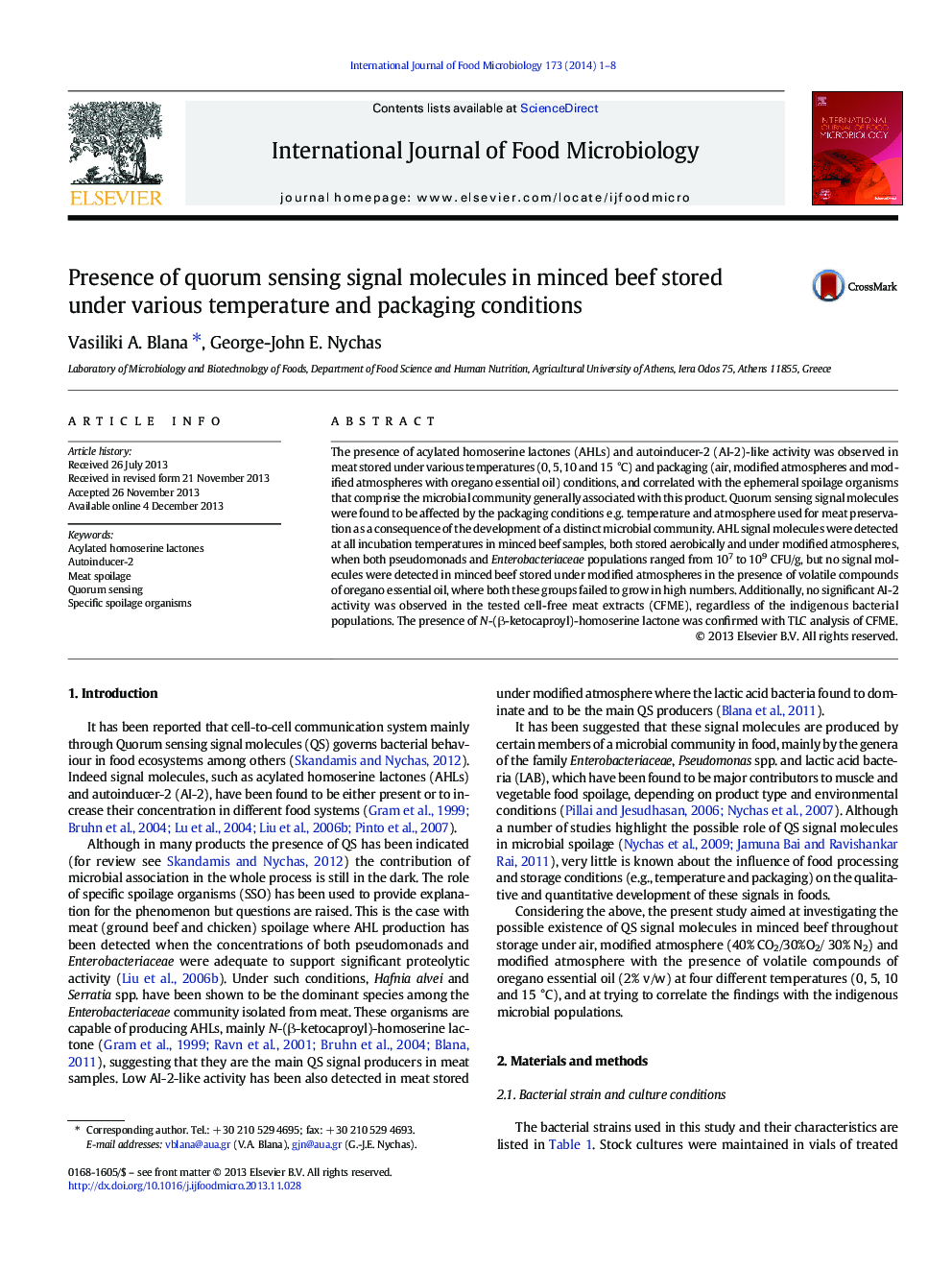| Article ID | Journal | Published Year | Pages | File Type |
|---|---|---|---|---|
| 4367003 | International Journal of Food Microbiology | 2014 | 8 Pages |
•Acylated homoserine lactones were present in minced beef stored under air and modified atmosphere conditions.•AHL signal molecules were detected when pseudomonads and Enterobacteriaceae populations were higher of 107 CFU/g.•Low levels of AI-2 activity were observed throughout storage of minced beef.
The presence of acylated homoserine lactones (AHLs) and autoinducer-2 (AI-2)-like activity was observed in meat stored under various temperatures (0, 5, 10 and 15 °C) and packaging (air, modified atmospheres and modified atmospheres with oregano essential oil) conditions, and correlated with the ephemeral spoilage organisms that comprise the microbial community generally associated with this product. Quorum sensing signal molecules were found to be affected by the packaging conditions e.g. temperature and atmosphere used for meat preservation as a consequence of the development of a distinct microbial community. AHL signal molecules were detected at all incubation temperatures in minced beef samples, both stored aerobically and under modified atmospheres, when both pseudomonads and Enterobacteriaceae populations ranged from 107 to 109 CFU/g, but no signal molecules were detected in minced beef stored under modified atmospheres in the presence of volatile compounds of oregano essential oil, where both these groups failed to grow in high numbers. Additionally, no significant AI-2 activity was observed in the tested cell-free meat extracts (CFME), regardless of the indigenous bacterial populations. The presence of N-(β-ketocaproyl)-homoserine lactone was confirmed with TLC analysis of CFME.
